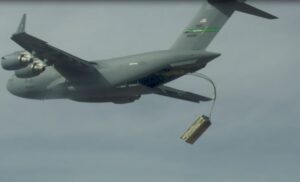
Under an up to $25 million, 18-month contract awarded by the Air Force Research Laboratory (AFRL) last month, Lockheed Martin [LMT] plans to demonstrate next year the capability for C-130 and Boeing [BA] C-17 airlifters to drop dozens of long-range cruise missiles, such as the Lockheed Martin Joint Air to Surface Standoff Missile-Extended Range (JASSM-ER). While such a capability may help in conflicts against nations with sophisticated air defenses, the use of airlifters as munitions platforms may also strain DoD…














